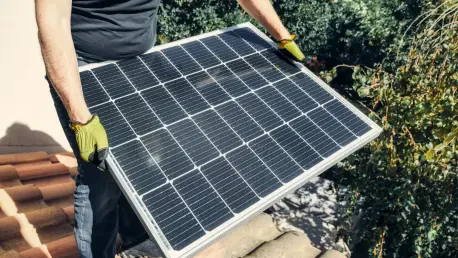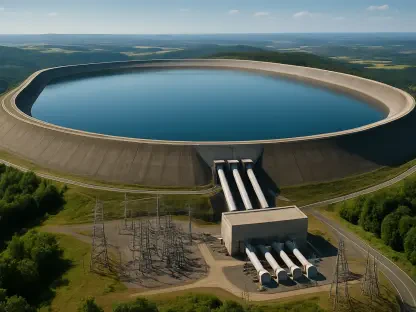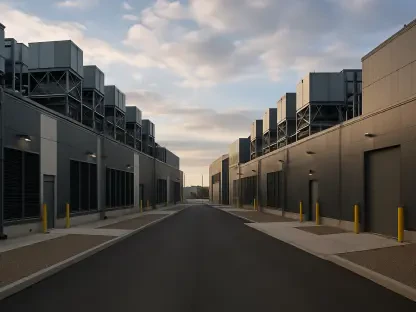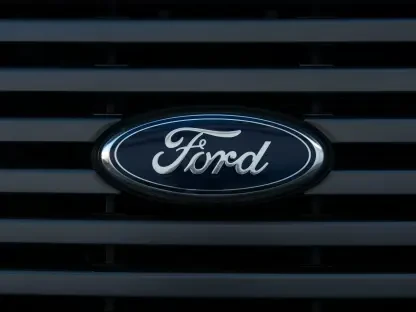The recent removal of aging solar panels at the Soaring Heights Communities subdivision on Davis-Monthan Air Force Base has sparked a conversation about the sustainability of energy solutions within residential areas. These panels, installed 15 years ago as part of an agreement with Tesla—then Solar City—were decommissioned due to reaching the end of their useful life. Despite the disappointment, the removal brings an opportunity to explore advanced alternatives that promote eco-friendly and efficient energy production. Lisa DeCambra, representing project owner Centinel, noted that the search for replacement options is ongoing, aiming to uplift the community’s renewable energy profile.
Transitioning from Old to New
Evaluating Solar Opportunities
In light of the panel removal, the initiative to explore replacement solutions holds significant weight. Stakeholders are keen to identify technologies that are not only sustainable but also adaptable to the needs of the Soaring Heights community. DeCambra emphasized that while no specific decisions have been finalized, the commitment to sustainability and energy efficiency remains firm. As the project seeks suitable alternatives, there is an opportunity to incorporate cutting-edge technologies that may enhance energy generation and management.
This transition phase highlights a broader movement within military housing initiatives toward greener practices. The original solar installation, part of a broader base strategy deployed alongside Soaring Heights’ setup, shows that sustainable energy remains a vital consideration. However, ensuring continuity in renewable energy practices means identifying and acting upon viable options that benefit all parties involved. The focus remains on securing partnerships or technology that reliably meet energy demands, reducing environmental impact while supporting community living standards.
Community Impacts and Concerns
The removal of the original panels has not gone unnoticed within the local community. Residents like Matt Somers expressed concerns over potential grid strain from increased reliance on Tucson Electric Power due to the absence of solar solutions. The population’s awareness points to a broader understanding of renewable energy’s role in sustainable living and the pressures traditional grid systems may face. These public sentiments underscore the importance of resolving energy replacement issues promptly and effectively.
Addressing these concerns, Centinel has pursued alternative sustainability projects, maintaining a trajectory towards energy efficiency. An example is the collaboration with TRO Energy Solutions, focusing on innovative platforms like in-home EV charging. Through such measures, the community aims to maintain its commitment to environmental stewardship while embracing modern technological advancements. These steps suggest a proactive approach to maintaining energy efficiency within Soaring Heights, reflecting a dedication to reducing carbon footprints and fostering greener living environments.
Sustainable Future Considerations
Commitment to Energy Efficiency
While panel removal raised questions about the continuity of renewable energy initiatives, the resolve to enhance eco-friendly practices remains a priority. Centinel, a key player in U.S. military housing, underscores its intent to explore holistic solutions that extend beyond mere solar replacements. This broader strategy involves diversified energy practices, ensuring that sustainability aligns with operational goals and resident expectations.
The move away from aging panels signifies more than a physical replacement—it calls for integrating systems that adapt over time, matching and exceeding prior capabilities. The focus on sustainability extends beyond solar power, encompassing various energy efficiency measures. By investing in diverse renewable energy projects, Soaring Heights reinforces its commitment to supporting military families while ensuring a minimal environmental footprint. It reflects a continued dedication to promoting progressive, sustainable practices.
Exploring Emerging Technologies
Looking forward, the integration of innovative solutions into the community’s energy portfolio remains critical. As new technologies emerge, opportunities increase for adopting systems that align with both community needs and broader environmental goals. Embracing advances in renewable energies, such as more efficient solar technologies or complementary systems like wind or geothermal energy, offers potential pathways to bolster sustainability.
While exploring these avenues, involvement from stakeholders such as energy firms, technology innovators, and military housing authorities can drive the implementation of robust and viable systems. These collaborations can support the advancement of energy strategies that deliver long-term benefits while respecting the community’s tradition of green initiatives. By focusing on an interdisciplinary approach, Soaring Heights can potentially secure its role as a model for sustainable residential energy solutions in future developments.
Moving Towards a Greener Horizon
The recent removal of old solar panels at the Soaring Heights Communities subdivision on Davis-Monthan Air Force Base has ignited discussions about the future of sustainable energy solutions in residential areas. Originally installed 15 years ago under a deal with Tesla—known then as Solar City—these panels were taken down as they had reached the end of their serviceable life. Although their removal might initially be seen as a setback, it actually offers a valuable opportunity to consider more advanced technologies that focus on eco-friendly and efficient energy production. Lisa DeCambra, a spokesperson for Centinel, the project’s owner, explained that the effort to find suitable replacement options is already underway. The aim is to enhance the community’s renewable energy capacity. Thus, while the removal marks the end of an era, it also paves the way for a future centered around more modern and sustainable energy solutions, promising a positive impact on community sustainability.









